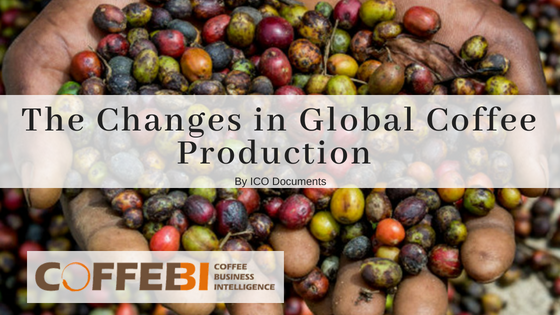Ethiopian Coffee and the Effects Due To Climate Change
 According to Daily Coffee News, as reported by research published in Nature Plants, about 39-59 per cent of Ethiopia’s coffee production area could not be suitable for growing coffee by the end of this century due to the effects of climate change. The study, led by Aaron Davis of the UK Kew Royal Botanical Gardens explored the 16 main coffee-growing regions of Ethiopia. They carried out field tests, climate modeling, interviewed farmers, high-resolution satellite mapping and the impact of the projected climate change throughout the country.
According to Daily Coffee News, as reported by research published in Nature Plants, about 39-59 per cent of Ethiopia’s coffee production area could not be suitable for growing coffee by the end of this century due to the effects of climate change. The study, led by Aaron Davis of the UK Kew Royal Botanical Gardens explored the 16 main coffee-growing regions of Ethiopia. They carried out field tests, climate modeling, interviewed farmers, high-resolution satellite mapping and the impact of the projected climate change throughout the country.
According to Justin Moat of the RBG in a press release,
“We found that a ‘business as usual’ approach could be disastrous for the Ethiopian coffee economy in the long-term.”
To him, a timely and precise science-based decision making is required as soon as possible “to ensure sustainability and resilience for the Ethiopian coffee sector.”
The study found out that an estimated 4 degrees Celsius increase in temperature by the end of the century will make 39 to 59 percent of Ethiopia’s current coffee production lands to be unsuitable for growth. The study also shows that areas that are seen today as “marginally” good for growth will be the first to suffer. On the other hand, coffee areas that are “highly suitable” now have been forecast to decline more fast in the future than expected.
Ethiopia, which is the birthplace of the arabica coffee, is renowned for its coffee quality and is the fifth largest coffee producer in the world and number one coffee exporter in Africa. Ethiopia exported about 180,000 metric tons of coffee in 2015/16 that brought in an estimated $800 million which represents about a quarter of the country’s earnings from exports. The coffee sector provides income for about 15 million Ethiopians, the study shows.
Taking into consideration the economic and historical significance of the coffee sector in Ethiopia, the study had as goal to support resiliency. According to the researchers, if the coffee lands are relocated to higher altitudes, there is the possibility of an increase in suitable land by four-folds.
With coffee grown by small-holder farmers, it will not be an easy task for them to relocate to higher altitudes. This may lead many to diversify out of coffee and others will try to grow coffee for the first time. For Ethiopia to build a climate-resilient coffee sector, there need to be major infrastructural changes that will affect thousands of farmers.
The study, which took three years was carried out for Building a Climate Resilient Coffee Economy for Ethiopia. This project was financed by the governments of Denmark, Norway and UK under the Strategic Climate Institutions Program (SCIP) Fund project.



